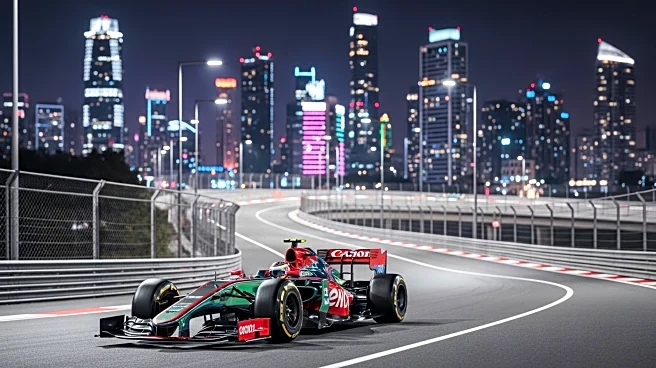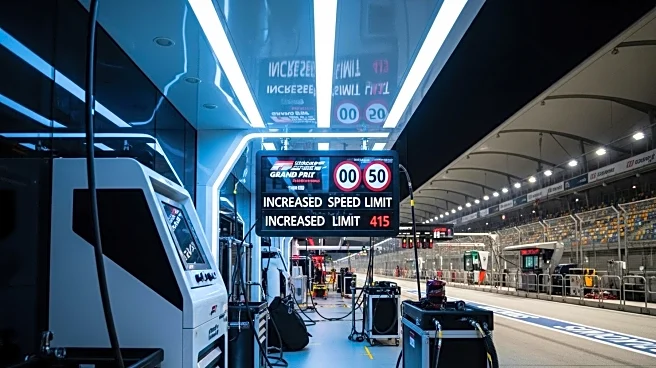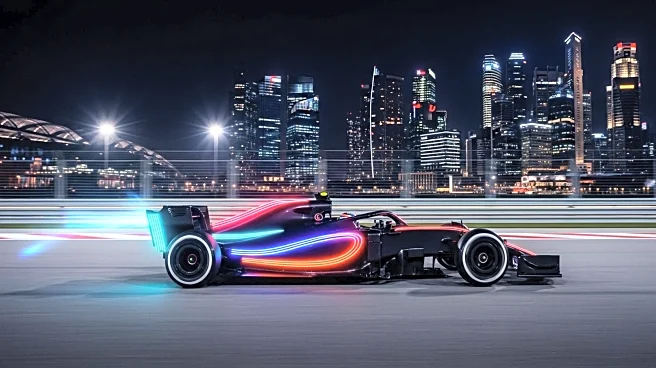What's Happening?
The FIA, Formula 1's governing body, has declared a 'heat hazard' for the upcoming Singapore Grand Prix, marking a historic first for the championship. This decision allows drivers the option to wear specially designed cooling vests during the race, which is known for its challenging conditions due to high temperatures and humidity. The cooling vests were initially intended to be mandatory under new regulations introduced this season, but the requirement was postponed, making their use optional. The vests have been tested throughout the year to address safety concerns that arose during the 2023 Qatar Grand Prix, where drivers faced excessive heat in the cockpit. The FIA's F1 race director, Rui Marques, communicated to teams that the heat index is expected to exceed 31.0°C during the race, prompting the heat hazard declaration.
Why It's Important?
The declaration of a heat hazard for the Singapore Grand Prix is significant as it highlights the increasing focus on driver safety in extreme weather conditions. The option to use cooling vests aims to prevent health issues such as dehydration and heat-related illnesses, which have previously affected drivers during races. This move could set a precedent for future races held in similarly challenging climates, potentially influencing regulations and safety measures in motorsport. The decision also underscores the importance of adapting to environmental conditions to ensure the well-being of athletes, which could lead to broader discussions on climate adaptation in sports.
What's Next?
As the Singapore Grand Prix approaches, teams and drivers will need to decide whether to utilize the cooling vests or rely on alternative systems installed in their cars. The race will serve as a test case for the effectiveness of these measures in mitigating heat-related risks. Depending on the outcomes, the FIA may consider implementing similar safety protocols for other races with extreme weather conditions. Stakeholders, including teams and sponsors, will be closely monitoring the situation to assess the impact on performance and safety, potentially influencing future investments in technology and equipment designed to enhance driver comfort and safety.
Beyond the Headlines
The introduction of cooling vests in Formula 1 could have broader implications for the sport, including ethical considerations regarding driver health and safety. It raises questions about the balance between competitive advantage and athlete welfare, as drivers opting out of the vests will have systems added to their cars to prevent weight advantage exploitation. This development may also prompt discussions on the role of technology in sports, as innovations like cooling vests become integral to performance and safety. Additionally, it could influence public perception of Formula 1's commitment to addressing climate-related challenges, potentially affecting fan engagement and sponsorship opportunities.











